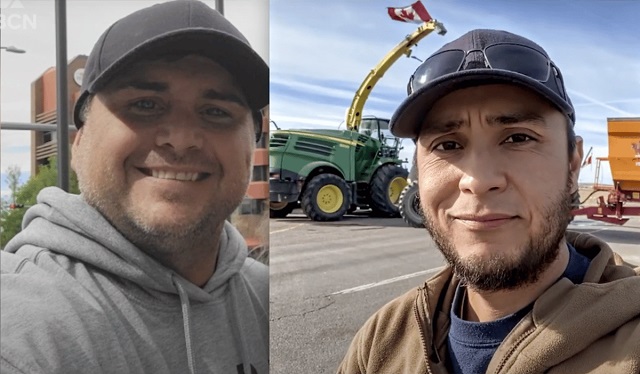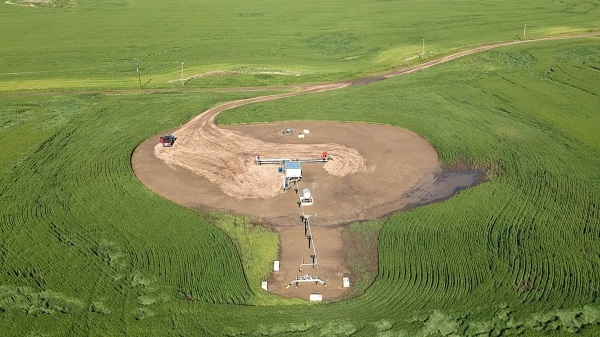Addictions
So What ARE We Supposed To Do With the Homeless?



David Clinton
Involuntary confinement is currently enjoying serious reconsideration
Sometimes a quick look is all it takes to convince me that a particular government initiative has gone off the rails. The federal government’s recent decision to shut down their electric vehicle subsidy program does feel like a vindication of my previous claim that subsidies don’t actually increase EV sales.
But no matter how hard I look at some other programs – and no matter how awful I think they are – coming up with better alternatives of my own isn’t at all straightforward. A case in point is contemporary strategies for managing urban homeless shelters. The problem is obvious: people suffering from mental illnesses, addictions, and poverty desperately need assistance with shelter and immediate care.
The Audit is a reader-supported publication. To receive new posts and support my work, consider becoming a free or paid subscriber.
Ideally, shelters should provide integration with local healthcare, social, and employment infrastructure to make it easier for clients to get back on their feet. But integration isn’t cost-free. Because many shelters serve people suffering from serious mental illnesses, neighbors have to worry about being subjected to dangerous and criminal behavior.
Apparently, City of Toronto policy now requires their staff to obscure from public view the purchase and preparation of new shelter locations. The obvious logic driving the policy is the desire to avoid push back from neighbors worried about the impact such a facility could have.
As much as we might regret the not-in-my-back-yard (NIMBY) attitude the city is trying to circumvent, the neighbors do have a point. Would I want to raise my children on a block littered with used syringes and regularly visited by high-as-a-kite – and often violent – substance abusers? Would I be excited about an overnight 25 percent drop in the value of my home? To be honest, I could easily see myself fighting fiercely to prevent such a facility opening anywhere near where I live.
On the other hand, we can’t very well abandon the homeless. They need a warm place to go along with access to resources necessary for moving ahead with their lives.
One alternative to dorm-like shelters where client concentration can amplify the negative impacts of disturbed behavior is “housing first” models. The goal is to provide clients with immediate and unconditional access to their own apartments regardless of health or behaviour warnings. The thinking is that other issues can only be properly addressed from the foundation of stable housing.
Such models have been tried in many places around the world over the years. Canada’s federal government, for example, ran their Housing First program between 2009 and 2013. That was replaced in 2014 with the Homelessness Partnering Strategy which, in 2019 was followed by Reaching Home.
There have been some successes, particularly in small communities. But one look at the disaster that is San Francisco will demonstrate that the model doesn’t scale well. The sad fact is that Canada’s emergency shelters are still as common as ever: serving as many as 11,000 people a night just in Toronto. Some individuals might have benefited from the Home First-type programs, but they haven’t had a measurable impact on the problem itself.
The Audit is a reader-supported publication. To receive new posts and support my work, consider becoming a free or paid subscriber.
Where does the money to cover those programs come from? According to their 2023 Financial Report, the City of Toronto spent $1.1 billion on social housing, of which $504 million came in funding transfers from other levels of government. Now we probably have to be careful to distinguish between a range of programs that could be included in those “social housing” figures. But it’s probably safe to assume that they included an awful lot of funding directed at the homeless.
So money is available, but is there another way to spend it that doesn’t involve harming residential neighborhoods?
To ask the question is to answer it. Why not create homeless shelters in non-residential areas?
Right off the top I’ll acknowledge that there’s no guarantee these ideas would work and they’re certainly not perfect. But we already know that the current system isn’t ideal and there’s no indication that it’s bringing us any closer to solving the underlying problems. So why not take a step back and at least talk about alternatives?
Good government is about finding a smart balance between bad options.
Put bluntly, by “non-residential neighborhood shelters” I mean “client warehouses”. That is, constructing or converting facilities in commercial, industrial, or rural areas for dorm-like housing. Naturally, there would be medical, social, and guidance resources available on-site, and frequent shuttle services back and forth to urban hubs.
If some of this sounds suspiciously like the forced institutionalization of people suffering from dangerous mental health conditions that existing until the 1970s, that’s not an accident. The terrible abuses that existed in some of those institutions were replaced by different kinds of suffering, not to mention growing street crime. But shutting down the institutions themselves didn’t solve anything. Involuntary confinement is currently enjoying serious reconsideration.
Clients would face some isolation and inconvenience, and the risk of institutional abuses can’t be ignored. But those could be outweighed by the positives. For one thing, a larger client population makes it possible to properly separate families and healthy individuals facing short-term poverty from the mentally ill or abusive. It would also allow for more resource concentration than community-based models. That might mean dedicated law enforcement and medical staff rather than reliance on the 9-1-1 system.
It would also be possible to build positive pathways into the system, so making good progress in the rural facility could earn clients the right to move to in-town transition locations.
This won’t be the last word spoken on this topic. But we’re living with a system that’s clearly failing to properly serve both the homeless and people living around them. It would be hard to justify ignoring alternatives.
The Audit is a reader-supported publication. To receive new posts and support my work, consider becoming a free or paid subscriber.
Addictions
New RCMP program steering opioid addicted towards treatment and recovery

News release from Alberta RCMP
Virtual Opioid Dependency Program serves vulnerable population in Red Deer
Since April 2024, your Alberta RCMP’s Community Safety and Well-being Branch (CSWB) has been piloting the Virtual Opioid Dependency Program (VODP) program in Red Deer to assist those facing opioid dependency with initial-stage intervention services. VODP is a collaboration with the Government of Alberta, Recovery Alberta, and the Alberta RCMP, and was created to help address opioid addiction across the province.
Red Deer’s VODP consists of two teams, each consisting of a police officer and a paramedic. These teams cover the communities of Red Deer, Innisfail, Blackfalds and Sylvan Lake. The goal of the program is to have frontline points of contact that can assist opioid users by getting them access to treatment, counselling, and life-saving medication.
The Alberta RCMP’s role in VODP:
- Conducting outreach in the community, on foot, by vehicle, and even UTV, and interacting with vulnerable persons and talking with them about treatment options and making VODP referrals.
- Attending calls for service in which opioid use may be a factor, such as drug poisonings, open drug use in public, social diversion calls, etc.
- Administering medication such as Suboxone and Sublocade to opioid users who are arrested and lodged in RCMP cells and voluntarily wish to participate in VODP; these medications help with withdrawal symptoms and are the primary method for treating opioid addiction. Individuals may be provided ongoing treatment while in police custody or incarceration.
- Collaborating with agencies in the treatment and addiction space to work together on client care. Red Deer’s VODP chairs a quarterly Vulnerable Populations Working Group meeting consisting of a number of local stakeholders who come together to address both client and community needs.
While accountability for criminal actions is necessary, the Alberta RCMP recognizes that opioid addiction is part of larger social and health issues that require long-term supports. Often people facing addictions are among offenders who land in a cycle of criminality. As first responders, our officers are frequently in contact with these individuals. We are ideally placed to help connect those individuals with the VODP. The Alberta RCMP helps those individuals who wish to participate in the VODP by ensuring that they have access to necessary resources and receive the medical care they need, even while they are in police custody.
Since its start, the Red Deer program has made nearly 2,500 referrals and touchpoints with individuals, discussing VODP participation and treatment options. Some successes of the program include:
- In October 2024, Red Deer VODP assessed a 35-year-old male who was arrested and in police custody. The individual was put in contact with medical care and was prescribed and administered Suboxone. The team members did not have any contact with the male again until April 2025 when the individual visited the detachment to thank the team for treating him with care and dignity while in cells, and for getting him access to treatment. The individual stated he had been sober since, saying the treatment saved his life.
- In May 2025, the VODP team worked with a 14-year-old female who was arrested on warrants and lodged in RCMP cells. She had run away from home and was located downtown using opioids. The team spoke to the girl about treatment, was referred to VODP, and was administered Sublocade to treat her addiction. During follow-up, the team received positive feedback from both the family and the attending care providers.
The VODP provides same-day medication starts, opioid treatment transition services, and ongoing opioid dependency care to people anywhere in Alberta who are living with opioid addiction. Visit vodp.ca to learn more.
“This collaboration between Alberta’s Government, Recovery Alberta and the RCMP is a powerful example of how partnerships between health and public safety can change lives. The Virtual Opioid Dependency Program can be the first step in a person’s journey to recovery,” says Alberta’s Minister of Mental Health and Addiction Rick Wilson. “By connecting people to treatment when and where they need it most, we are helping build more paths to recovery and to a healthier Alberta.”
“Part of the Alberta RCMP’s CSWB mandate is the enhancement of public safety through community partnerships,” says Supt. Holly Glassford, Detachment Commander of Red Deer RCMP. “Through VODP, we are committed to building upon community partnerships with social and health agencies, so that we can increase accessibility to supports in our city and reduce crime in Red Deer. Together we are creating a stronger, safer Alberta.”
Addictions
Saskatchewan launches small fleet of wellness buses to expand addictions care

By Alexandra Keeler
Across Canada, mobile health models are increasingly being used to offer care to rural and underserved communities
Saskatchewan has launched a small fleet of mobile wellness buses to improve access to primary health care, mental health and addiction services in the province.
The first bus began operating in Regina on Feb. 12. Another followed in Prince Albert on March 21. Saskatoon’s bus was unveiled publicly on April 9. All three are former coach buses that have been retrofitted to provide health care to communities facing barriers to access.
“Mobile health units are proven to improve outcomes for people facing barriers to healthcare,” Kayla DeMong, the executive director of addiction treatment centre Prairie Harm Reduction, told Canadian Affairs in an email.
“We fully support this innovative approach and are excited to work alongside the health bus teams to ensure the people we support receive the care they need, when and where they need it.”
Wellness buses
Like all provinces, Saskatchewan has been grappling with the opioid crisis.
In 2023, an estimated 457 individuals died from overdoses in the province. In 2024, that number fell to 346. But the province continues to struggle with fatal and non-fatal overdoses.
In late February, Saskatoon firefighters responded to more than 25 overdoses in a single 24-hour period. Just over a week later, they responded to 37 overdoses within another 24-hour window.
Saskatchewan’s wellness buses are part of the province’s plan to address these problems. In April 2025, the province announced $2.4 million to purchase and retrofit three coach buses, plus $1.5 million in annual operating funds.
The buses operate on fixed schedules at designated locations around each city. Each bus is staffed with a nurse practitioner, nurse and assessor coordinator who offer services such as overdose reversal kits, addiction medicine and mental health referrals.
“By bringing services directly to where people are, the health buses foster safer, more welcoming spaces and help build trusting relationships between community members and care providers,” said DeMong, executive director of Prairie Harm Reduction.
Saskatoon-based Prairie Harm Reduction is one of the local organizations that partners with the buses to provide additional support services. Prairie Harm Reduction provides a range of family, youth and community supports, and also houses the province’s only fixed supervised consumption site.
The mobile model
Saskatchewan is not the only province using wellness buses. Across Canada, mobile health models are increasingly being used to expand access to care in rural and underserved communities.
In Kingston, Ont., the Street Health Centre operates a retrofitted RV called PORCH (Portable Outreach Care Hub) that serves individuals struggling with homelessness and addiction.
“Our outreach services are extremely popular with our clients and community partners,” Donna Glasspoole, manager at Street Health Centre, said in an emailed statement.
“PORCH hits the road two to three days/week and offers a variety of services, which are dependent on the health care providers and community partners aboard.”
Street Health Centre also has a shuttle service that picks up clients in shelters and brings them to medical clinics or addiction medicine clinics.
The PORCH vehicles are not supported by provincial funding, but instead rely on support from the United Way and other grants. Glasspoole says the centre’s permanent location — which does receive government funding — is more cost-effective to operate.
“The vehicles are expensive to operate and our RV is not great in winter months and requires indoor parking,” she said.

Politically palatable
Many mobile health models currently do not provide controversial services such as supervised drug consumption.
The Saskatchewan Health Authority told Canadian Affairs the province’s new wellness buses will not offer supervised consumption services or safer supply, where drug users are given prescribed opioids as an alternative to toxic street drugs.
“There are no plans to provide supervised consumption services from the wellness buses,” Saskatchewan Health Authority spokesperson Courtney Markewich told Canadian Affairs in a phone call.
This limited scope may make mobile services more politically palatable in provinces that have resisted harm reduction measures.
In Ontario, some harm reduction programs have shifted to mobile models following Premier Doug Ford’s decision to suspend supervised consumption services located within 200 metres of schools and daycares.
In April, Toronto Public Health ended operations at its Victoria Street fixed consumption site, replacing it with street outreach and mobile vans.
The Ontario government’s decision to close the sites is part of a broader pivot away from harm reduction. The province is investing $378 million to transition suspended sites into 19 new “HART Hubs” that offer primary care, mental health, addictions treatment and other supports.
Glasspoole says that what matters most is not whether services are provided at fixed or mobile locations, but how care is delivered.
Models that “reduce barriers to care, [are] non-judgemental, and [are staffed by] trauma-informed providers” are what lead more people toward treatment and recovery, she said in her email.
In Saskatchewan, DeMong hopes the province’s new wellness buses help address persistent service gaps and build trust with underserved communities.
“This initiative is a vital step toward filling long-standing gaps in the continuum of care by providing low-barrier, community-based access to health-care services,” she said.
This article was produced through the Breaking Needles Fellowship Program, which provided a grant to Canadian Affairs, a digital media outlet, to fund journalism exploring addiction and crime in Canada. Articles produced through the Fellowship are co-published by Break The Needle and Canadian Affairs.
Subscribe to Break The Needle
-

 Alberta11 hours ago
Alberta11 hours agoAlberta Independence Seekers Take First Step: Citizen Initiative Application Approved, Notice of Initiative Petition Issued
-

 Crime10 hours ago
Crime10 hours agoNational Health Care Fraud Takedown Results in 324 Defendants Charged in Connection with Over $14.6 Billion in Alleged Fraud
-

 Health9 hours ago
Health9 hours agoRFK Jr. Unloads Disturbing Vaccine Secrets on Tucker—And Surprises Everyone on Trump
-

 Bruce Dowbiggin12 hours ago
Bruce Dowbiggin12 hours agoThe Game That Let Canadians Forgive The Liberals — Again
-

 Alberta1 day ago
Alberta1 day agoCOVID mandates protester in Canada released on bail after over 2 years in jail
-

 Crime2 days ago
Crime2 days agoProject Sleeping Giant: Inside the Chinese Mercantile Machine Linking Beijing’s Underground Banks and the Sinaloa Cartel
-

 Alberta2 days ago
Alberta2 days agoAlberta uncorks new rules for liquor and cannabis
-

 Business1 day ago
Business1 day agoCanada’s loyalty to globalism is bleeding our economy dry







